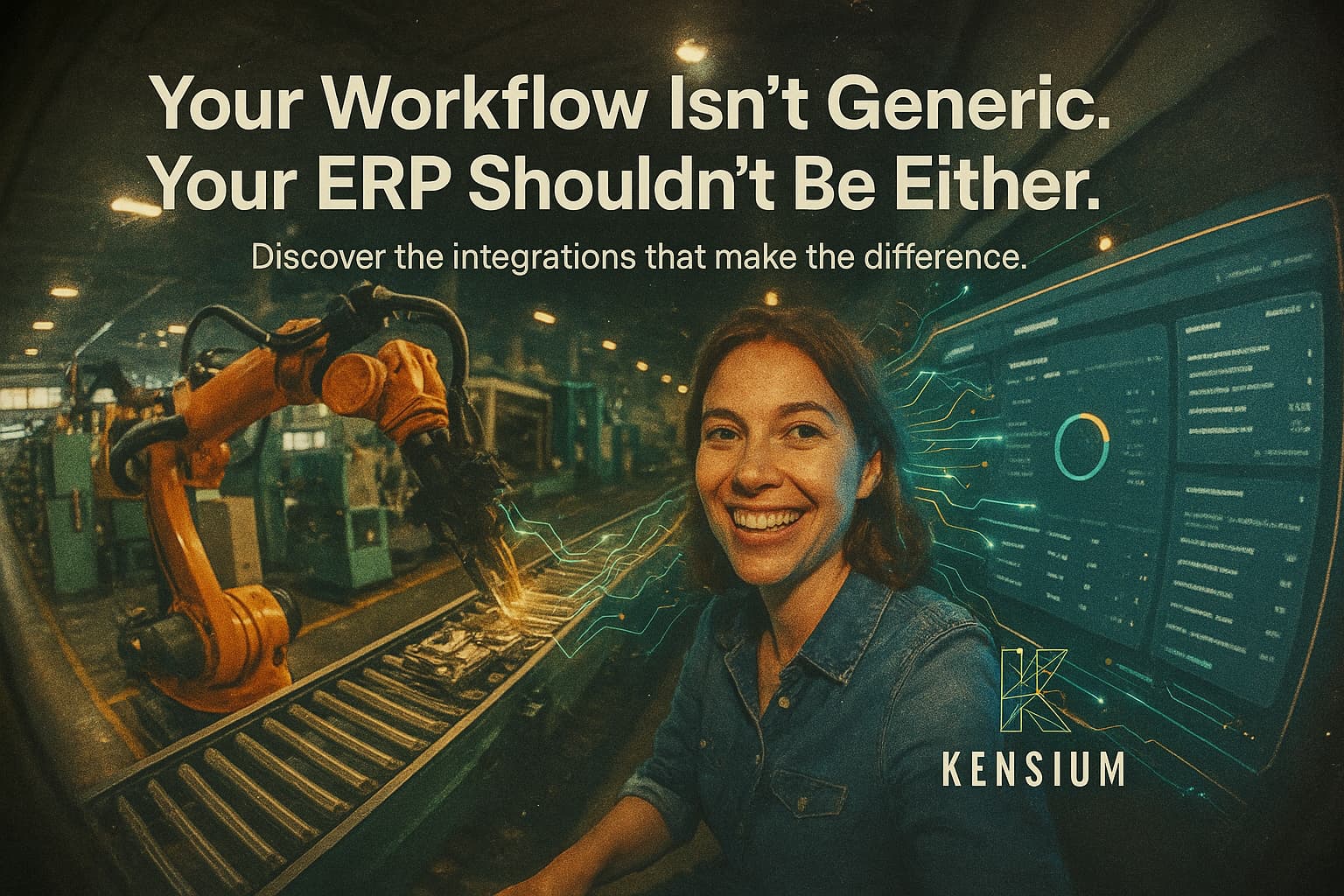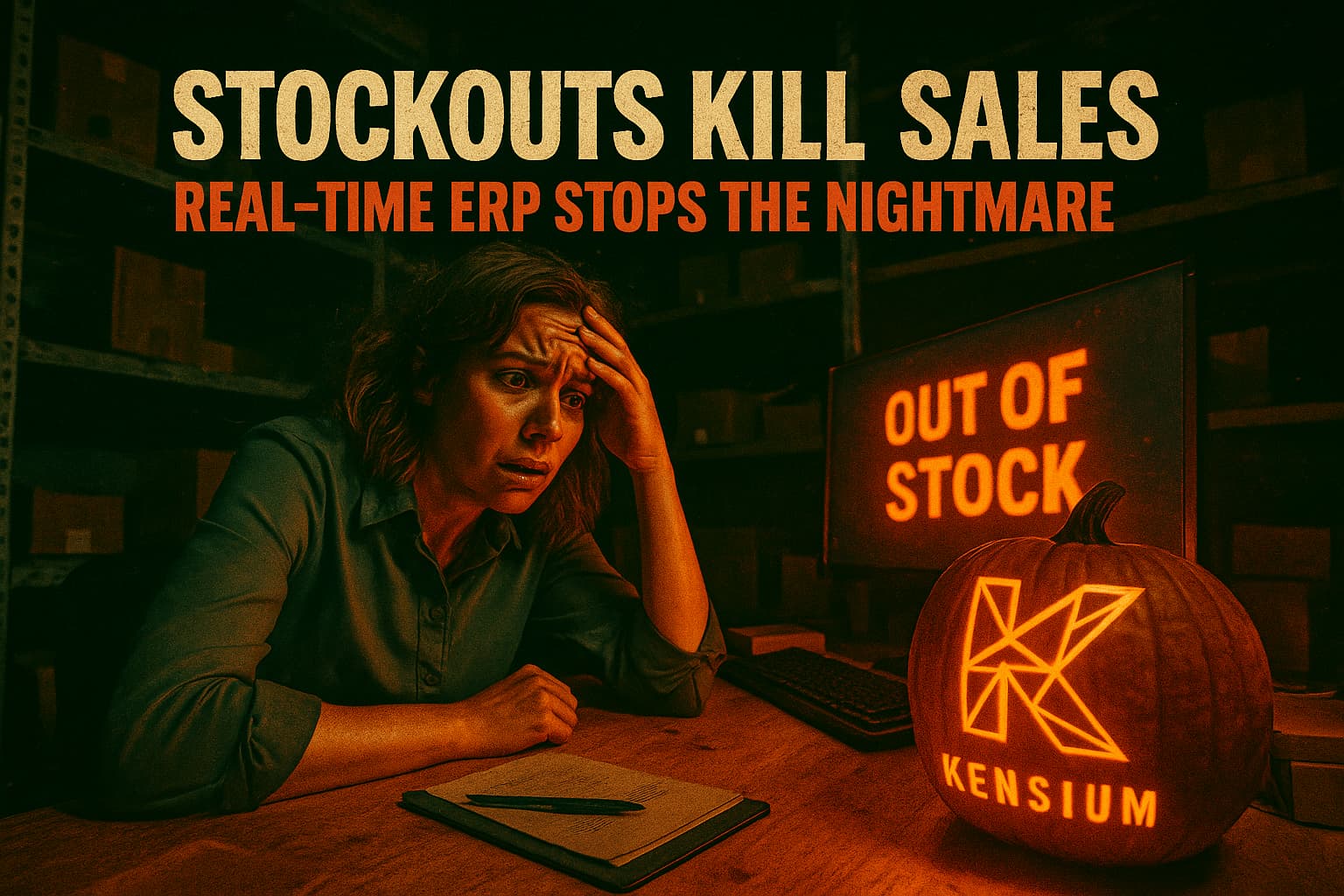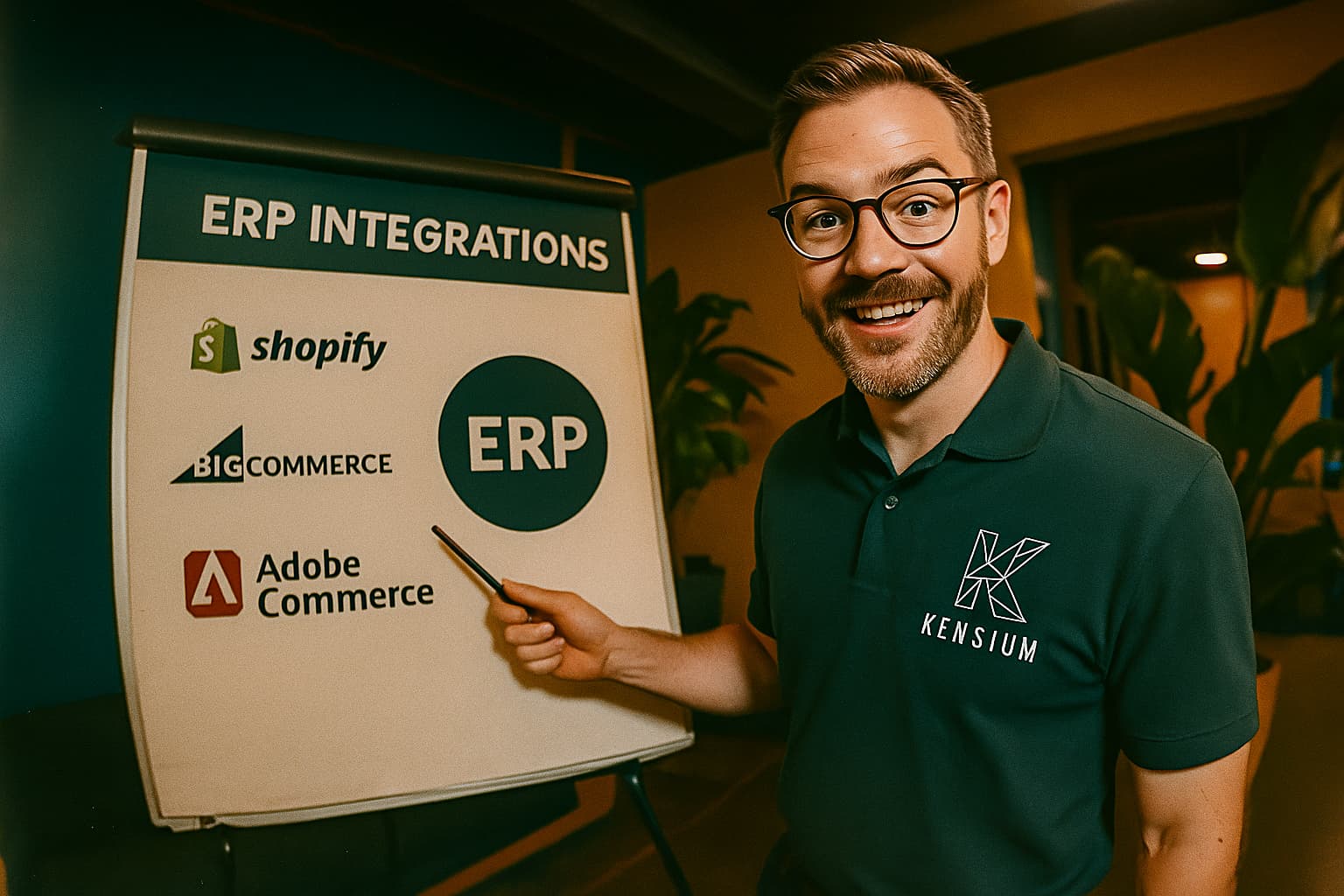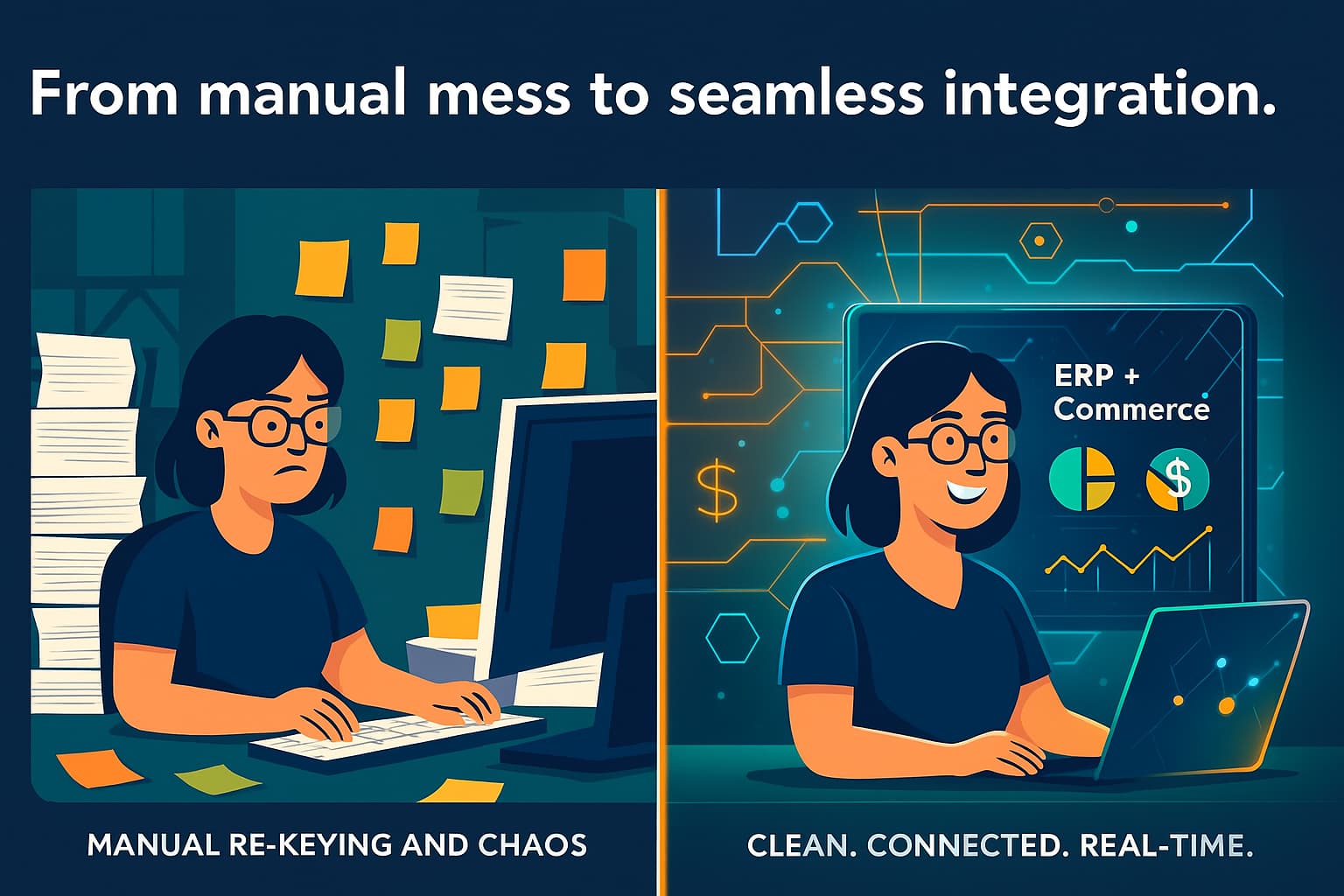-small.jpeg)
The outbreak of COVID-19 illustrated the need for digital and remote capabilities for many distribution companies. Suddenly, distribution companies putting off technological upgrades find themselves in a situation where they need to support a remote workforce quickly. In addition, upgrading your digital capabilities provides massive value because companies can leverage their data effectively and provide customers with reliable online options.

Not only are you transforming your business, but you're implementing faster communication, remote capabilities, and more options for customers. Enabling digital sales and revenue channels includes risk mitigation and revenue diversification. Digital evolution directly addresses the challenges that 2020 has given all of us.
Three significant steps are critical to digitally evolving your business, each of which adds a ton of value to your operations:
- Organizing and preparing your online and offline data. This step entails centralizing and cataloging your shipping, product, and customer data to one digital location.
- After data organization and prep, it's time to build an online customer portal.
- While focusing on customers and products, looking internally and seeing what you need to support remote workers and operations is vital. This means looking at your ERP or back-office management software. Unfortunately, older, legacy platforms are not built to support a remote workforce.
COVID-19 may have changed the digital sales landscape, but Kensium offers the tools and experience to help you get up and running quickly.
Kensium's Unique Value To Distribution Companies
Kensium is 100% committed to the wholesale/distribution sectors. We understand distributors' unique challenges, from changing customer expectations to the importance of worker safety (and many in between). But we are technologists at heart, so we also know the steps to accelerate projects and drive down implementation and support costs. We believe that leveraging the right eCommerce technology to reduce operational costs means connecting back-office operations to a customer-facing portal or multiple portals.

We've worked with multiple distributors stuck on legacy ERPs and needed something more flexible. So we provided them with tech that integrated their ERP with eCommerce & CRM systems, allowing them to run multiple customer portals from a solitary inventory.
These experiences have given us the inside scoop on how distributors can maximize efficiency and get the most significant ROI possible. So, we wrote this guide; to share that inside info with you and show you how digitally evolving your company is the right decision to make now. So, without further ado, here is the first step:
Step #1: Organize And Prepare Your Data
There's a reason why people always say we're living in the "Information Age"; it's because data is king. It is one of, if not the single, most important resource businesses can use to gain competitive advantages. Distributors work with massive supplier networks that contain thousands of SKUs. Hundreds of catalogs often detail these SKUs in different formats, and many are paper-based. As a result, contract rates, terminology, and field mapping can vary from supplier to supplier. Sometimes catalogs are even in entirely different languages!
Getting all this online and organized can be a hefty task to contemplate, but the value gained is extraordinary once you do. Modern customer expectations have risen dramatically; they count on things to "just work." This means that if there are information gaps, if something they receive doesn't correspond to what they see online, or even if the customer experience takes too long, they will lose patience. Having high-quality data is now the status quo for online distributors, and not prioritizing data quality can spell trouble in the future.
Here are the advantages you can have by tightening up your data management:
- Improved user experience, customer loyalty, and retention.
- Better search capabilities so customers can find what they want ASAP.
- Increase in conversion rates.
- Fewer returns/exchanges.
- Better cross-sells and up-sells.
It's a lot, right? Kensium knows these advantages because we have a dedicated team and proven methodology for handling B2B data, particularly converting raw data to machine-readable form, then preparing it for import into eCommerce and ERP systems. We can also help with best practices for maintaining data organization by providing your team with training modules and templates moving forward. All this data preparation is the foundation for our next step:
Step #2: Build An Online Customer Portal
Buying habits have been changing for years, and one of the biggest influences has been the rise of Amazon.com. Amazon's buying process and customer experience have led to the "Consumerization of B2B": B2B buyers want complete agency when they make purchases, buying when, where, and how they want. And they want it all to be as easy as possible.
A website with a virtual shopping cart is no longer enough; distributors sell multiple brands in multiple countries, using numerous warehouses and multiple 3PL providers. The only way to handle this is to build a comprehensive customer portal. You might think that a "customer portal" is another word for going to a website, clicking on a product, filling in shipping info, and clicking Buy. But there are significant differences in what makes up an online customer portal compared to an eCommerce site.

For starters, customer portals let distributors create company accounts for their customers. You can add sales reps to these accounts, set payment options, establish credit lines, and assign custom catalogs and price lists. There is no confusion about who or what is assigned to each customer, and if you do it right, each customer will feel especially taken care of, thanks to these tailor-made accounts.
Customers can also use portals to self-serve. When they log in, they get a personalized experience. They only see content relevant to them. They can check credit limits, balance, and available credit and track orders from a single dashboard. Their order history allows them to place quick reorders or upload CSV files, so they don't have to search for products. Buyers can also request quotes, which you, the distributor, can monitor, add comments and attachments, and set expiration dates. This is why having rock-solid data is so important; without correct data that you can rely on, all of these features will not work the way they should.

The main objective of the customer portal is to empower the customer so they can self-manage their orders and purchasing power. Customers shouldn't wait for your business to complete specific tasks to obtain the desired products. The best customer portals even save your business time and money by automating processes for repeat customers with recurring orders, then notify you when customer requests change.
Step #3: Integrate With A Cloud-Based ERP
Choosing the right ERP is a massive topic, so we focus on the two key benefits of modern ERP systems: Cloud-based architecture and eCommerce integration capability.
Legacy ERP systems weren't built to cater to a remote workforce, but cloud-based systems are. However, due to COVID-19, you've probably run into the problem of team members not having access to local resources, customer info, or technical documents while away from the office. No mobile access is also a big issue; for example, if employees in the field had questions, they would need to call them in rather than being able to access the system remotely from a laptop, phone, or tablet.
-small.jpeg)
At Kensium, we have the most experience implementing Acumatica, one of the top cloud-based ERP systems worldwide, so we'll use that as our example. Since Acumatica runs in the cloud, you only need a web browser to get access anytime and from any device. They also offer unlimited users (some ERPs charge "per seat"), so the entire staff can stay connected and have visibility into financials, inventory, warehouse, eCommerce, and field service operations.
Once orders are placed, operations management is critical to business success. That's why fully integrating your ERP with your front-facing eCommerce platform can provide tremendous advantages. Kensium can implement both eCommerce and ERP platforms and combine the two, all under one roof (or many roofs, considering everyone's working from home these days).
Now Is The Time To Future-Proof Your Business
Digital evolution is not just about updating your business for the digital "here-and-now" but about "future-proofing" your business, i.e., being prepared for what the world will throw at you. Now's the time to address current problems and prepare for the uncertain future in one implementation.
It's also about making it easy for customers to do business with you. However, they want to engage with your organization. So let's review your main steps to providing this value:
- Prioritize your data first before focusing on digital strategy.
- Make sure your entire team can access your business no matter where they are or what device they're on, making it easier for customers to do business with you.
- Have a single source of truth for all your financials, sales channels, warehousing, fulfillment, and analytics with an eCommerce portal integrated directly with your ERP.
The eCommerce platforms Magento and BigCommerce, and Acumatica are widely recognized as best-in-class for this exact purpose. When combined, no other systems on the market can compete with functionality, performance, or value. Kensium is unique because we're the only company that can assist with both (plus the integration between them) under one roof. It's a one-stop shop to future-proof your business.
Kensium Provides Technology And Experience
As the official Commerce Partner for Acumatica, Kensium has built many commerce integrations in the Acumatica marketplace, the most popular being the Acumatica-Magento, BigCommerce, and Shopify Connectors. In addition, we combine eCommerce and Acumatica into a single package (the Acumatica Commerce Edition) that syncs orders, customer data, product info, and shipping data, all bi-directionally and in real-time.
When front-end and back-end systems integrate seamlessly, changes made on changes on one platform reflect immediately on the other, so there is a single source of truth. This lets you operate more efficiently, reduce manual order entry and errors, and streamline inventory management. This last function is beneficial; you will know what you always have in stock across all channels, have fewer backorders, and when you need to replenish certain products. To learn more about what full integration entails, check out the Kensium Microlearning series on our YouTube page.








.png)
























































